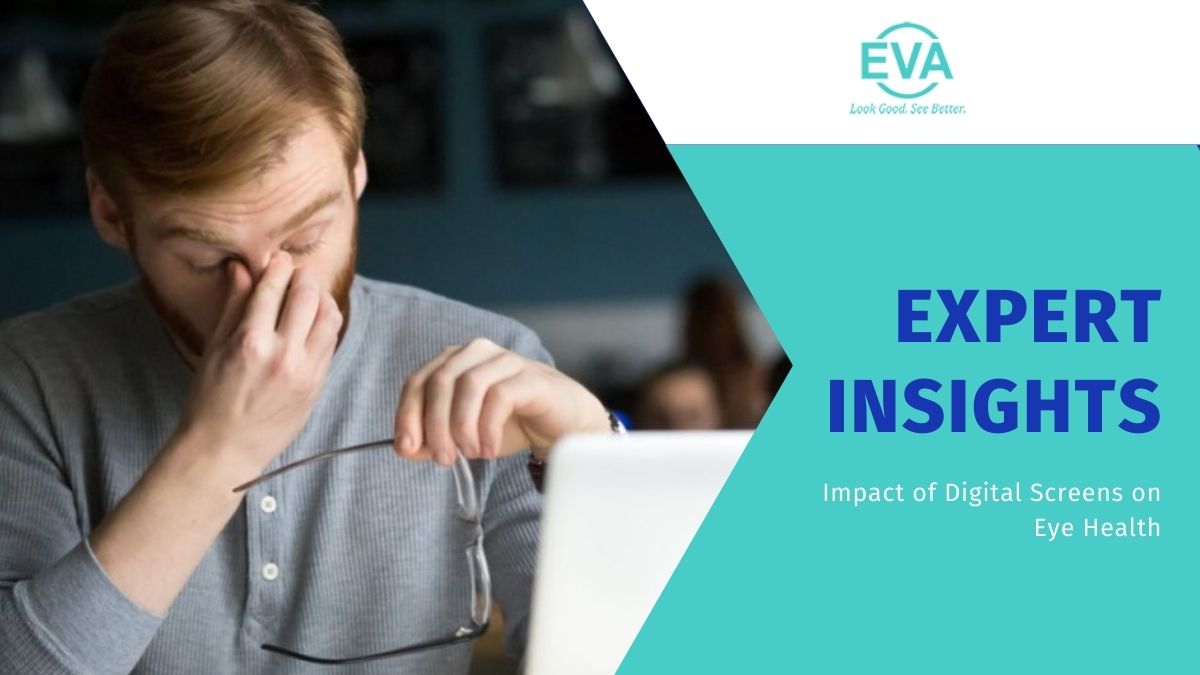Impact of Digital Screens on Eye Health: Expert Insights

In today’s digital age, screens are an unavoidable part of daily life. From smartphones and tablets to computers and televisions, people spend hours every day staring at digital screens. While technology has brought convenience and efficiency, prolonged screen exposure has raised concerns about its impact on eye health. Experts warn that excessive screen time can lead to several eye-related issues, including digital eye strain, dry eyes, and even long-term vision problems.
Understanding Digital Eye Strain
One of the most common issues associated with prolonged screen use is digital eye strain (DES), also known as computer vision syndrome. This condition arises from continuous screen exposure and is characterized by symptoms such as:
-
Eye fatigue
-
Blurred vision
-
Dry or irritated eyes
-
Headaches
-
Neck and shoulder pain
According to the American Optometric Association (AOA), digital eye strain affects a significant portion of screen users, particularly office workers, students, and gamers. Unlike printed text, digital screens emit blue light and flicker, forcing the eyes to work harder to focus and process images, leading to discomfort and strain.
The Role of Blue Light Exposure
Blue light, a high-energy visible (HEV) light emitted by digital screens, has been a growing concern among eye care professionals. While natural exposure to blue light from the sun is beneficial for regulating sleep-wake cycles, excessive artificial blue light from screens can lead to potential eye damage and sleep disturbances. Studies suggest that prolonged blue light exposure may contribute to:
-
Retinal Damage: Some researchers believe that long-term exposure to blue light may increase the risk of macular degeneration, a leading cause of vision loss.
-
Disrupted Sleep Patterns: Blue light interferes with melatonin production, making it harder to fall asleep and reducing sleep quality.
-
Increased Eye Strain: The short wavelengths of blue light scatter more easily, reducing contrast and making it harder for the eyes to focus.
Dry Eyes and Reduced Blinking
Another common complaint among screen users is dry eye syndrome. Normally, people blink around 15 to 20 times per minute, which helps spread tears evenly across the eye’s surface, keeping it moist and comfortable. However, studies have shown that when focusing on a digital screen, blink rates drop by nearly 50%, leading to dry, irritated eyes.
Dry eyes can cause:
-
Redness
-
Burning sensations
-
Light sensitivity
-
Difficulty wearing contact lenses
Experts recommend using artificial tears or lubricating eye drops and consciously blinking more often while working on digital screens to alleviate dryness.
Long-Term Vision Concerns
While digital eye strain and dry eyes are temporary issues, long-term exposure to screens could lead to more serious vision concerns. Some experts worry that prolonged screen usage, especially among children and young adults, may contribute to myopia (nearsightedness) progression. Studies indicate that increased screen time and reduced outdoor activities are linked to a higher prevalence of myopia worldwide.
Tips to Protect Your Eyes from Screen Strain
Experts recommend several strategies to reduce the harmful effects of screen exposure:
1. Follow the 20-20-20 Rule
The 20-20-20 rule is an effective way to prevent digital eye strain. Every 20 minutes, take a 20-second break and look at something 20 feet away to relax your eye muscles.
2. Adjust Screen Settings
-
Brightness: Keep screen brightness at a comfortable level that matches the surrounding light.
-
Contrast: Increase contrast for better readability.
-
Font Size: Enlarge text to reduce the need for squinting.
-
Blue Light Filters: Use blue light filtering apps or enable night mode on devices to reduce blue light exposure.
3. Maintain Proper Screen Distance
-
Keep screens at least an arm’s length (about 20-24 inches) away from your eyes.
-
Position screens at eye level or slightly below to minimize strain on the neck and shoulders.
4. Blink More Often and Stay Hydrated
To prevent dry eyes, make a conscious effort to blink frequently and drink plenty of water throughout the day. Consider using a humidifier in dry environments to keep the air moist.
5. Use Artificial Tears
If you experience dry eyes, over-the-counter lubricating eye drops can help keep your eyes comfortable and prevent irritation.
6. Take Frequent Breaks
Avoid prolonged screen exposure by taking breaks every hour. Stretching and looking away from the screen helps relax the eye muscles and reduce strain.
7. Get Regular Eye Exams
Annual eye check-ups are crucial, especially for individuals who spend extended hours in front of screens. An eye doctor can detect early signs of digital eye strain, prescribe specialized glasses, and recommend preventive measures.
Conclusion
While digital screens have become an integral part of modern life, it is essential to take proactive steps to protect eye health. Digital eye strain, dry eyes, and blue light exposure can lead to discomfort and potential long-term vision issues if not managed properly. By adopting healthy screen habits, such as following the 20-20-20 rule, adjusting screen settings, and taking frequent breaks, individuals can significantly reduce the strain on their eyes. Consulting an eye care professional for personalized advice and regular check-ups is also essential in maintaining optimal eye health in the digital era.

